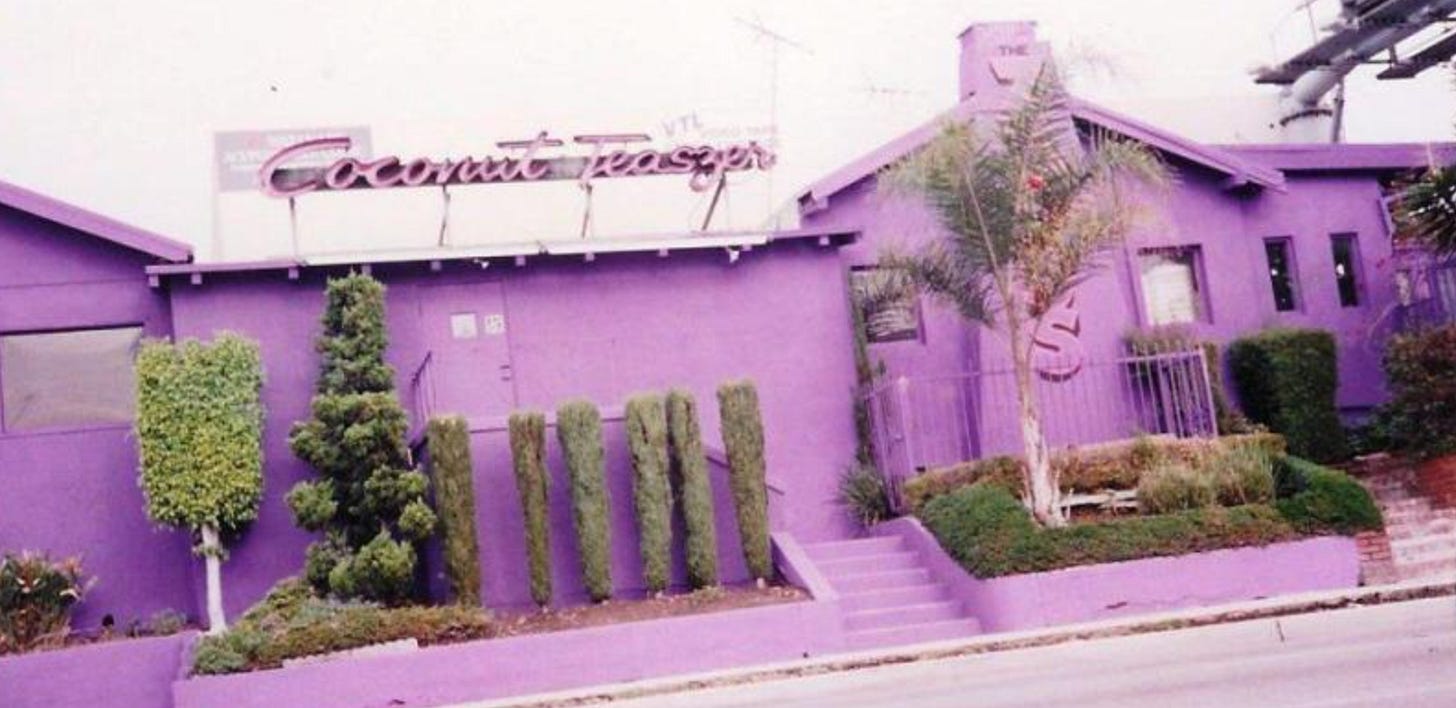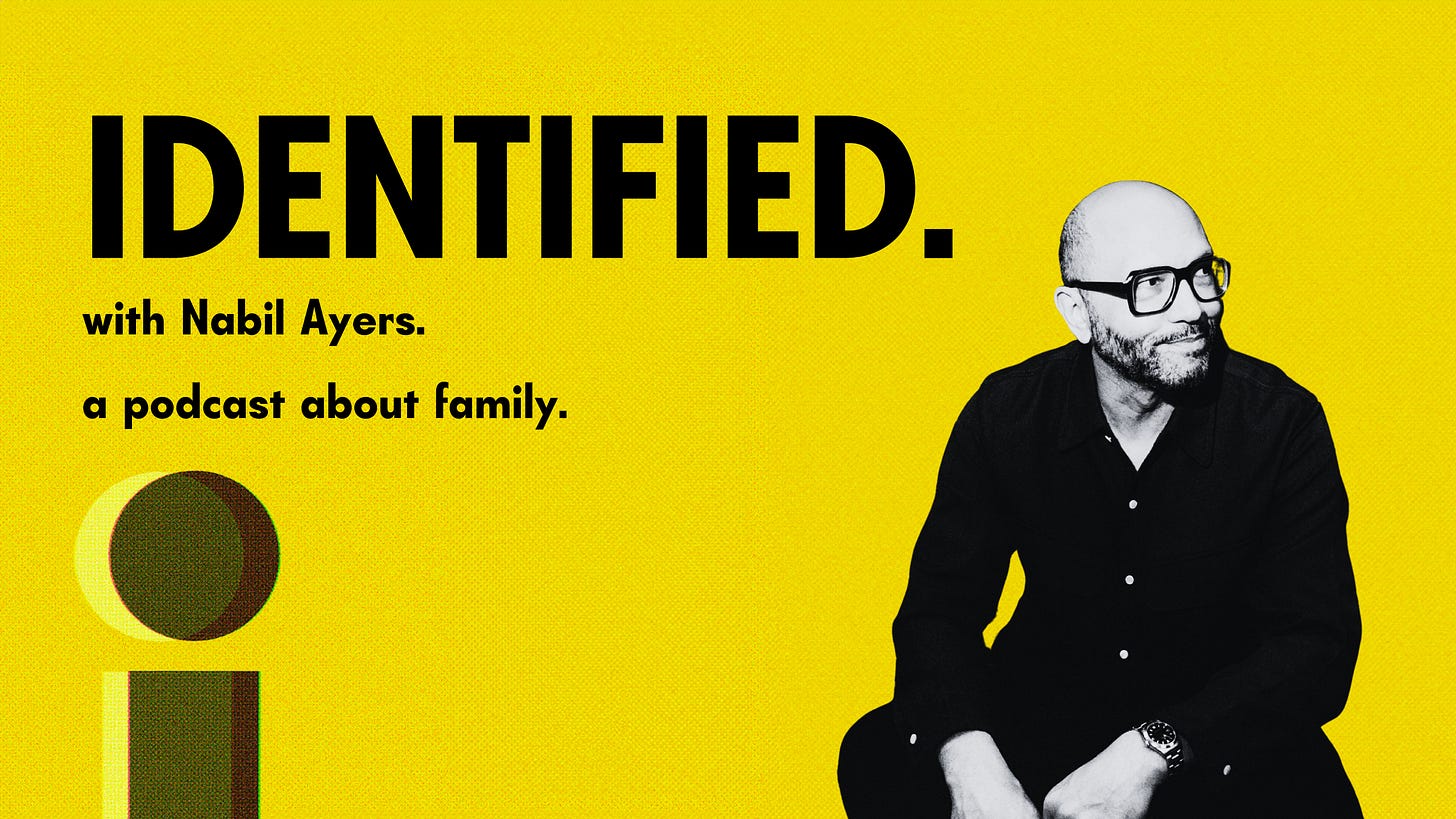I Love LA
I visited Los Angeles twice as a kid. The first time, as a sixth-grader from Salt Lake City, my mom flew us out for a quick two-day trip to Disneyland with a family friend, Elouise. Later that same year, while visiting my uncle Alan in New York City, he got a last-minute call to join a band opening for The Psychedelic Furs on their Forever Now tour. Never one to turn down a gig, Alan grabbed his saxophone—and me—and soon I was back in LA, watching my favorite band play two sets in one night at Pasadena’s legendary Perkins Palace.
That same year, Alan got another call to be in the video for Randy Newman’s hit song, “I Love LA.” In the video’s intro, Newman strolls through a bleak, black-and-white New York scene, complaining about the city:
Hate New York City
It's cold and it's damp
And all the people dressed like monkeys
Then Alan shows up for two seconds, blowing a few notes that echo Newman’s disdain. Soon, the screen fills with all the colorful images that represented LA in 1983: sun, roller skates and lips flash, and suddenly Randy Newman is living the LA dream, wearing sunglasses and driving a red convertible. I remember seeing this video on MTV as a kid and thinking it looked like the movies, and wondering why in my two trips to LA, I never saw anything like that.
I didn’t return to LA until thirteen years later, when I was 23, and my Seattle rock band, The Lemons, made the brutal 20-hour-ish drive down I-5 to play for important record label people. This was my first time in what felt like real LA. We crashed on a friend’s floor in a dingy apartment just off the Sunset Strip, where people who looked like Randy Newman drove convertibles, and all the imagery from the “I Love LA” video felt almost comically present.
I don’t remember trips to the beach, swimming pools, or strolls down the Santa Monica Pier. Instead, I spent most of my time indoors, inhaling second-hand cigarette smoke in that dark basement apartment, eating fast food, sipping bottled water at fancy record company offices, and feeling nauseous during unbearably long van rides between destinations. We played at the infamous Coconut Teaszer, where I remember a small audience, a cranky staff, terrible sound, and, much like our accommodations, a ton of cigarette smoke.
"LA sucks," was my review when I returned home to Seattle.
But I kept going back. First as a drummer in various bands, and eventually for record store meetings and other work. Like any big city, I soon learned that LA was vast and that my experiences on the Sunset Strip, while quintessentially LA in some ways, didn’t capture the city’s full scope. When my band played at Spaceland in 1997, I described the Silver Lake neighborhood to my Seattle friends as "Seattle with a sun." Over time, as I grew up, I started to experience more of what LA had to offer. I had dinner at friends’ homes, discovered restaurants and bars that weren’t chains, and did things people do in “normal” cities. I’ve never seriously considered moving to LA, but I’ve likely visited at least 100 times. Each trip reveals something new to love: the elegant martinis at Musso & Frank, the gigantic enchiladas at Guelaguetza, hikes in Griffith Park, the smell of jasmine that appears out of nowhere, and I still get a kick out of the skeptical looks I get when I walk 15 minutes somewhere that could more easily be a three-minute drive.
My wife, Ally Jane, was born and raised in LA, so it seemed only fitting for us to get married there in 2018. That’s when I first realized how deeply connected I felt to the city. Our LA friends helped us find a DJ, a local wine store, a rabbi, and all the other details that made our wedding personal and uniquely ours.
I felt even more tied to LA after learning that my paternal family had been rooted there since the 1930s, after moving from Oklahoma. My father was born in Los Angeles. I have cousins who I’m newly in regular contact with. My grandparents are buried there, and recently, my aunt joined them in the same cemetery.
Now, much of the city I’ve visited so often has experienced unimaginable trauma. I’ve only seen pictures and heard stories, so it’s hard to truly grasp the devastation. From my Brooklyn home, I’ve been scrolling through GoFundMe links, checking on friends, and feeling weird about “liking” Instagram posts that show lives shattered by fire and loss.
I lived in Seattle on September 11, 2001, and a month later, it felt important to visit New York—the city where I was born. I needed to feel its energy and resilience, to support its continued existence in some small way. I’m scheduled to visit LA later this month for the GRAMMYs and to record some podcast episodes. I haven’t canceled my trip, but it’s hard to imagine what it might feel like. Much like New York in 2001, I feel a pull toward Los Angeles—a city that has constantly surprised and amazed me—and I hope being there will help honor its spirit in some small way.
All 20 episodes of my podcast, Identified Season 1 are live now. Episode one is with Karen Ayers, a living descendant of the man who enslaved my paternal ancestors. After that, it’s a rapidly growing list of musicians, comedians, authors, chefs and friends talking about family. Identified is available on all major podcast platforms, 100% free and ad free. You can watch short video clips on YouTube and Instagram. Watch for Season 2 in 2025.
Listen: Apple Spotify Amazon Bandcamp Website
My memoir is called My Life in the Sunshine. You can order it here, or listen to the audiobook on Spotify.
I hope to see you somewhere soon. Upcoming events are always listed here.
Nabil Ayers / Brooklyn









